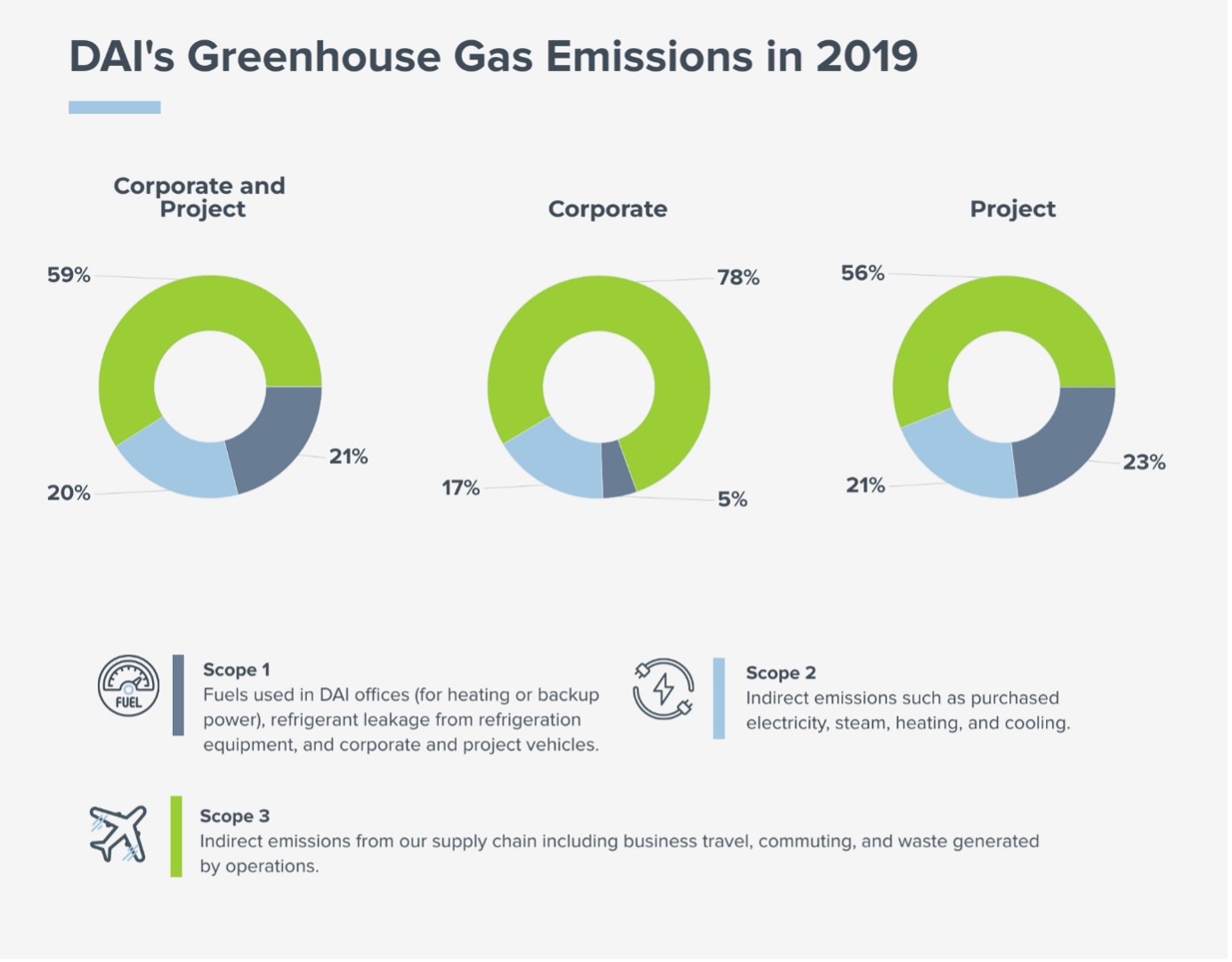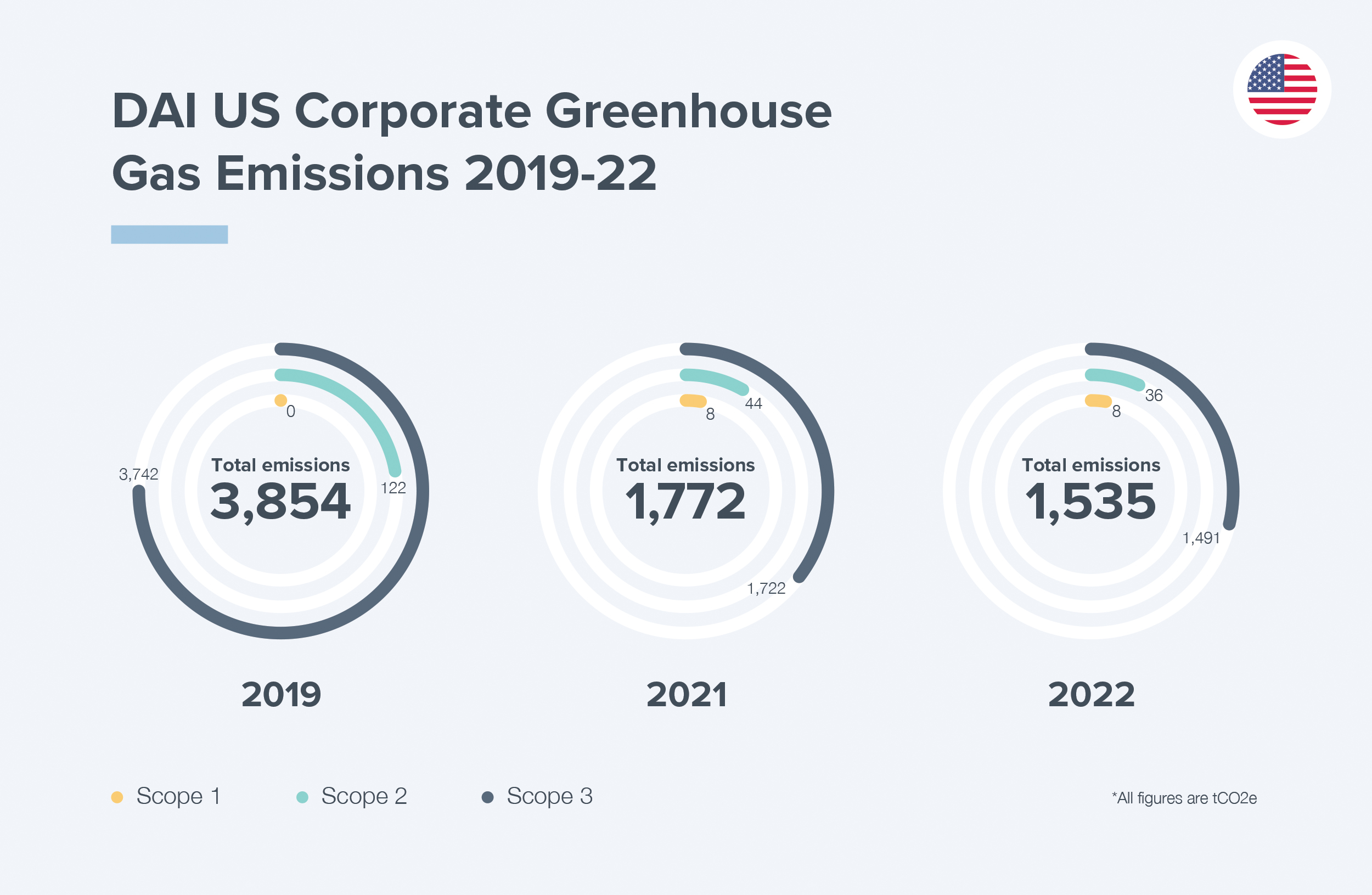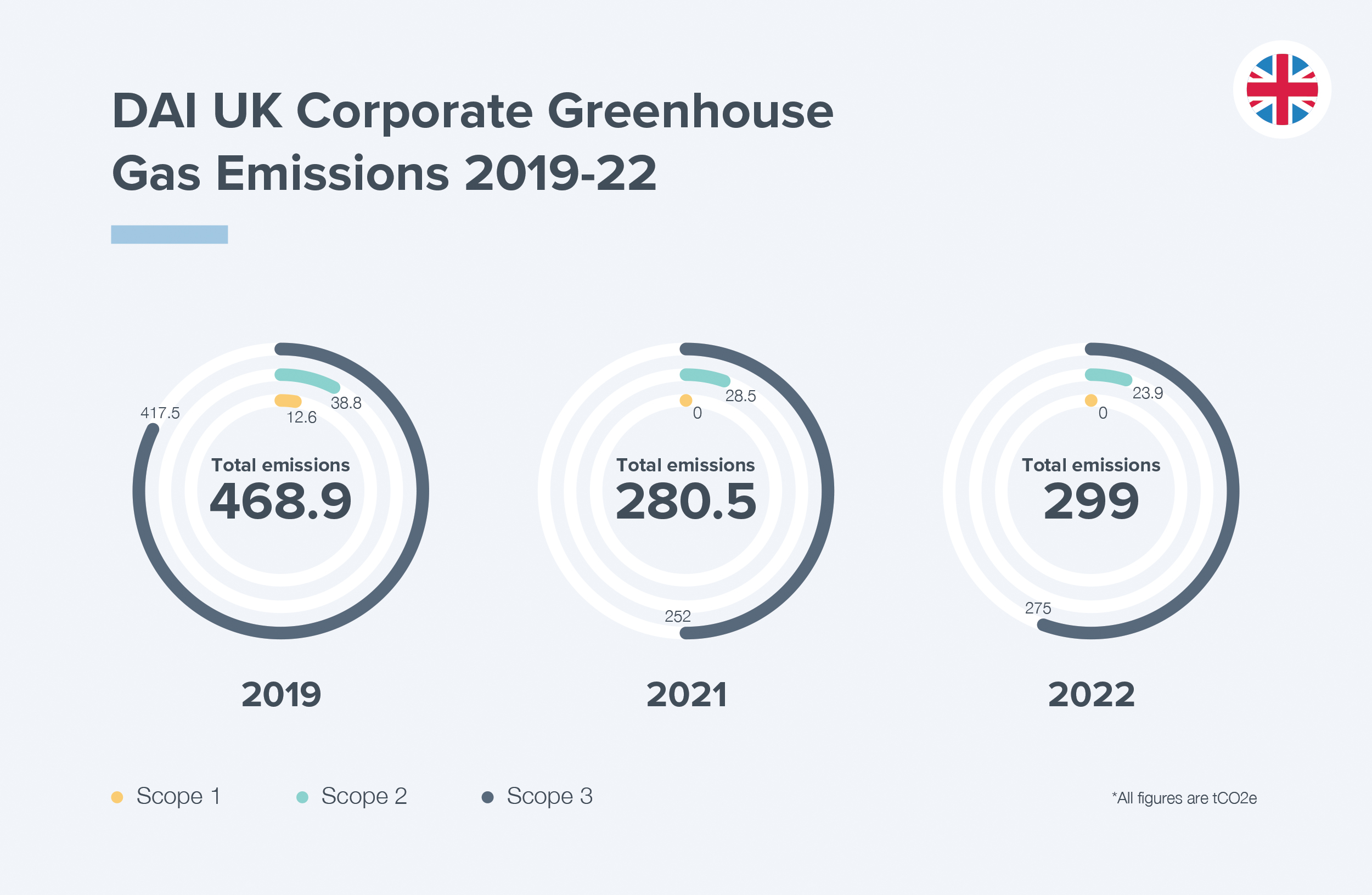Net Zero at DAI
At DAI, we are motivated by shaping a more livable world. We are committed to addressing the challenges posed by changes in climate and our Net Zero Initiative is an essential part of this commitment.
DAI is committed to reducing greenhouse gas emissions (GHG) and becoming Net Zero by 2050.
In 2021, DAI launched a new climate practice to build on our global expertise in climate adaptation and mitigation and provide our clients with fresh solutions, approaches, and innovation. We are committed to addressing the challenges posed by changes in climate and our Net Zero Initiative is an essential part of this commitment.
In April 2022, the Science-Based Targets Initiative (SBTi) validated our near-term emissions reduction target. Our proposed target meets all SBTi criteria in terms of timeframe, emissions coverage, and ambition. We are now implementing our decarbonization strategy across DAI.
DAI’s Science-Based Target
DAI commits to reduce its absolute Scope 1, 2, and 3 GHG emissions by 50 percent by 2030 from a 2019 base year. 100 percent of our organization’s emissions are covered by our target, using an “absolute contraction” approach, meaning that we will reduce emissions by a specified amount rather than in proportion to a separate business metric.
Establishing the baseline
DAI followed the GHG Protocol Corporate Standard to audit our emissions. We established 2019 as our baseline because it is the most representative recent (pre-pandemic) year from which we can gather data. For the base year, emissions are 32,938 tCO2e. The GHG inventory covers all relevant GHG emissions from relevant sources and subsidiaries. The following charts break down DAI emissions in our corporate and project operations.

We measured and have committed to reducing emissions across all three scopes: 1 (direct emissions), 2 (indirect emissions such as purchased electricity), and 3 (indirect emissions in our supply chain).
Scope 1
For DAI, Scope 1 emissions resulted from fuels used in DAI offices (heating or backup power), refrigerant leakage from air-conditioning or refrigeration equipment, and corporate and project vehicles.
Scope 2
Scope 2 covers indirect emissions such as purchased electricity, steam, heating, and cooling. For DAI, Scope 2 emissions result primarily from electricity usage.
Scope 3
Most of our emissions in Scope 3 are caused by business travel. We have not excluded any Scope 3 categories in our baseline or from our near-term target despite air travel being the most challenging scope to decarbonize. Business travel is where we have the most extensive footprint and, therefore, where we can have the most significant impact.
How we will achieve our targets
- We will reduce our emissions across all three scopes, focusing on our most carbon-intensive activities: business travel and offices. We are switching to renewable energy providers and embedding energy efficiency best practices globally. We are also reducing the amount of flights, localizing activities, and providing our staff with the data, choices, and incentives to make smarter and greener travel decisions.
- Besides managing emissions directly in our control, our ambition is to work closely with our clients and stakeholders to present ways to reduce GHG reductions through the work we deliver globally, whether through policy development or investment in new technologies.
- We are working along our supply chain to help suppliers and partners incorporate GHG reductions across their offices and programs.
- We collaborate across our sector to facilitate best practice, sharing what we have learned and seeking to provide greater value to our clients and the societies where we operate.
- We ensure transparency by embedding our science-based targets into our global environment, social, and governance metrics, which measure our performance. We report to the CDP Global initiative annually.
Our results to date


In 2023, we provided CDP with our emissions reporting for scopes 1, 2, and 3 for our U.S. office in Bethesda (see graph). We received a ‘C’ grade, which is the global average for professional service firms. This grade indicates awareness-level engagement and highlights our understanding of how environmental issues intersect with business and how our operations affect people and ecosystems. We remain committed to continuing to improve our score and strengthening our processes and systems to drive emissions down.
While emissions for our U.K. office continue to track down, we saw a small uptick under scope 3. This is primarily attributable to a COVID bounce-back on travel. We are continuing to update our systems, tools, and procedures to minimize the need for travel where possible and, where necessary, use lower-carbon options as the default.
Please find our DAI Global UK Reduction Plan here.
RELATED CONTENT:
DAI Selected as Top Innovator in Global Poll of International Development Professionals
DAI has been named a Devex Top 40 Development Innovator, one of only 10 consulting firms so honored globally. The award was based on a poll of 100,000 Devex members, who comprise the world’s largest network of aid and international development professionals.
Read More